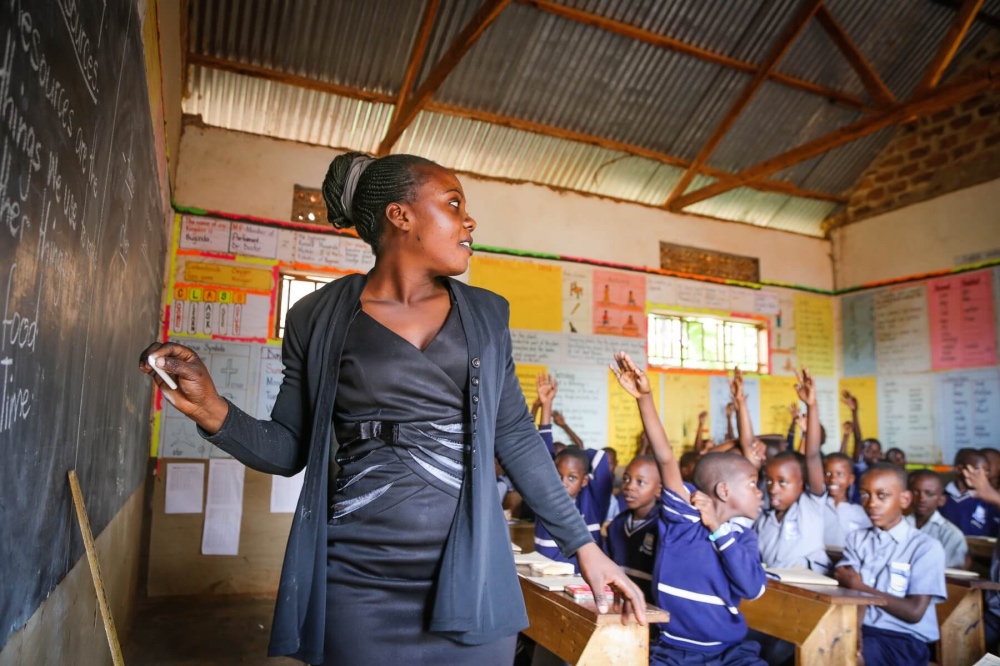
Empowering women in education means more than just getting girls into schools as Nathan Byrd, head of global programs at microfinance and development organisation Opportunity International, explains to DAVID ADAMS in an interview to mark International Women’s Day…
Empowering women in education means more than just getting girls into schools according to Nathan Byrd, head of global programs at microfinance and development organisation Opportunity International. Mr Byrd, usually based in London but on a two week visit to Australia, explains further in an interview to mark International Women’s Day…
Firstly – I wanted to do a bit of scene setting. Just how under-represented are girls in schools in developing countries?
“It’s funny – the common narrative is that there are a ton of girls out of school everywhere and it’s a huge problem but actually it remains a major problem in a handful of very under-developed countries like [the Democratic Republic of] Congo, for example…But, actually, if you go somewhere like Rwanda or somewhere like Cambodia, you have higher percentages of girls in school than ever…But a lot of their needs are not being met, so as much as girls are well represented, their needs – their specific needs – are not as well represented as they could be.”

Empowering women in schools can have ramifications through entire communities, says Mr Byrd. PICTURE: Opportunity International.
“For us, it’s about meeting people where they are. Rather than coming in with a top-down approach and saying ‘You should change this’, it’s about figuring out why.”
What have been – and still are – the main barriers to getting girls into education?
“A mix of cultural and economic [reasons] and sometimes they’re hard to break apart. We often think, ‘Well, those girls aren’t in school because they’re parents are pulling them out to go to work or take care of the kids’ but what we often don’t do is look before that – what caused that to happen, why are they making this decision now?
“And there are two things we look at – [firstly] if the finances of the family just aren’t enough to support that child being at school and it’s a survival decision…And then [secondly] on the education side, we [can] have situations like the parents becoming uncomfortable that their girl is in school as they reach maturity, worried that they’re going to be taken advantage of in an insecure community. Or that…when girls start menstruating, they don’t have gender-separated wash facilities to take care of themselves…
“So as much as it is [about] the family making a decision, it all comes from the financial reality of the situation they live in. That’s why the countries where girls are under-represented are the poorest countries on the planet…On the other side, schools need to be much more responsive to the needs of girls to make every effort for them to be able to continue in their education.”
How is Opportunity working to overcome those barriers? Is it simply about providing finance? Or bring about a culture change?
“For us, it’s about meeting people where they are. Rather than coming in with a top-down approach and saying ‘You should change this’, it’s about figuring out why. Why do you feel that the girl is the best one to take care of the child if some one has to stay home from school? Why is it that you’re progressing the boy in school faster? Why is it that you don’t have girls [in] separated dorms at present? And oftentimes, it’s because of a logical reason that has come into their heads; it’s not because ‘Oh, we just want to keep them down’. It’s actually an incomplete logic model. And so…we meet them where they are and help them to progress by taking best practices from other parts of the world. It’s just creating a conversation….”
It’s obvious, I guess, why we want gender parity in education but are the ramifications bigger than just getting girls in school? Does it have ramifications in the wider community as well?
“Absolutely. USAID did a study a while back…where they found that for every additional year of elementary school that a girl child completes that she wouldn’t otherwise have, she would grow her eventual income by 10 to 20 per cent per annum and every year of secondary school adds 15 to 25 per cent onto her eventual income. So once you start doing that math, she can earn $1,000 a year or $17,600 if that compounds upwards. And so that’s a massive, massive difference in terms of the development of the overall country.
“We also know that child mortality under five years drops massively when mothers are educated. We also know that delinquency in community drops massively and we also know that we gain an entire other half of society back that we’ve been missing for so long which has legitimate input into the guidance of a nation as it grows.”
Is Rwanda [where gender parity has been reached among children in schools] a good example of what happens when you do get girls into education?
“Absolutely. No only do you see the economic growth of Rwanda as a whole taking off (and there’s a lot more to it than just including girls, of course – there’s having good governance and a lack of corruption etcetera) – but at the community level you see women taking leadership roles…
“One great example I give in Ghana [of a woman taking a leadership role and the difference that it can make] is that of a woman named Comfort Appiah…She runs Ahobrase Academy which means ‘Hope Academy’ on the outskirts of Accra. She started with just the idea that she might run a school because she found literally naked kids running around this community that popped up and there wasn’t a school…and the parents didn’t really believe in education.
“”[B}ecause she was so committed to getting these kids into school, she went door-to-door, literally clothing naked children and bringing them into her school, convincing their parents that it was important. And now 10 years later, [with Opportunity] having offered her six different loans and direct support and growing her business, the conversation has changed in the community from ‘Why should I send my kids to school?’ to everyone in the community saying ‘Hey, why aren’t you sending your child to school?’
“And that school that she started with 25 kids in her living room is now a school for 750 kids and is the best performing school in the district. And now she is the politically strongest person in the community because of microfinance and our ‘meet them where they are’ approach in empowering her. And I know that’s different…than just getting girls into school but you take an educated women and empower her in the education space and watch the community change and develop around it.”
And that’s an illustration, I guess, of the two pronged approach Opportunity has – lending money to parents but also investing in schools?
“That’s exactly right….When you support a school and that school grows, not only do you get more kids into school and not only do you create more cashflow for that school proprietor to invest in the quality of education being provided, that school also has an opportunity to employ more people. Every loan that we give, we estimate creates around 18.6 new jobs in the community, whether that be for construction or teachers and security guards or satellite businesses like restaurants and coffee shops and computer centres which pop up around [the school]. What’s interesting about Comfort’s story is that she now employs 60 people and there’s a grocery store and a bakery and a coffee shop that didn’t existed [before]…So this is a model for community development….as much as it’s an education model. The school becomes the economic, social and emotional centre of the community.”

Nathan Byrd
“I’m optimistic but this is a long game. Gender empowerment and gender inclusion in education is not a switch you can flip. It’s a process and it’s an engagement strategy that necessitates underlying cultural change. We know it’s going to take a really long time.”
I gather that you’re optimistic that things are moving forward with regard to girls in education around the world, particularly in developing countries?
“I’m optimistic but this is a long game. Gender empowerment and gender inclusion in education is not a switch you can flip. It’s a process and it’s an engagement strategy that necessitates underlying cultural change. We know it’s going to take a really long time. And so this isn’t something that a two or three year program is going to provide a silver bullet for…It’s an opportunity to meet people where they are and help to engage in this cultural change, both in the developed world and in developing markets.
“Without that type of viewpoint, we risk dumping and running, We risk coming up with a great idea, on paper, developed in an armchair somewhere in the developed world and saying ‘Hey, girls in India should do this’ or ‘Hey, teachers in Ecuador should do this’. That doesn’t work. We’ve got to go there, we’ve got to be there, we’ve got to be on the ground, we’ve got to get our hands dirty and we’ve got to engage with people. We’ve got to change hearts and minds by engaging directly, by sitting and drinking the same tea,…”
Lastly, if someone reading this wants to get involved and help, how can they do that?
“First and foremost…this is about engagement. And so I think the first thing they can do is engage with us and that’s by going to our website – www.opportunity.org.au/iwd – and leave their email address. And that will trigger a donor of ours to give $10 for every email address that we get. And then we can tell them how they can be an active agent of change for girls around the world…[I]t’s about empowering groups like ours to go into market and spend time with these communities with these schools, with these girls…”
This interview has been edited for length and clarity.





